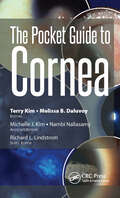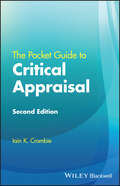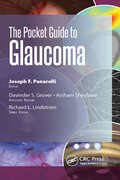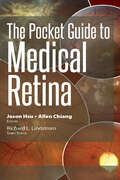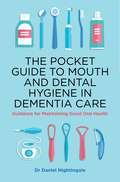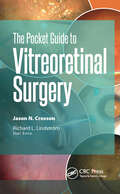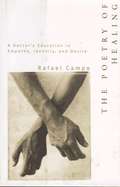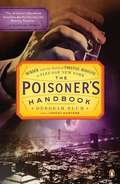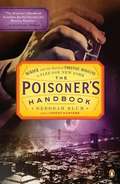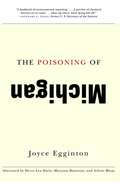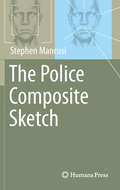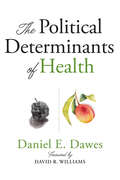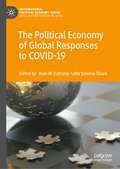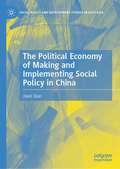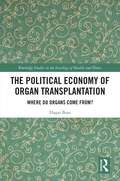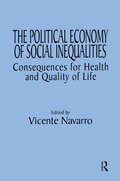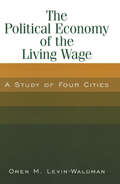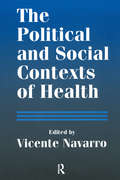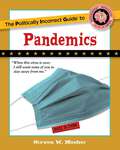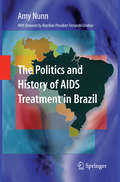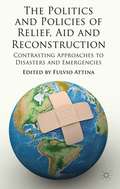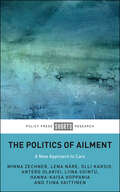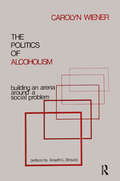- Table View
- List View
The Pocket Guide to Cornea (Pocket Guides)
by Terry Kim Melissa DaluvoyAre you a medical student or resident trying to absorb as much information on the cornea as efficiently as possible? Are you an ophthalmologist who needs fast facts on a specific corneal disease? Reach into your lab coat pocket and pull out The Pocket Guide to Cornea for easy access to the information you need right now. Drs. Terry Kim and Melissa Daluvoy have designed this book as the most effective way to take in the information on the cornea for the entire spectrum of eye care providers. Medical students and residents will be pleased to have this accessible, high-yield handbook during their rotations to familiarize themselves with cornea findings and diagnoses, while seasoned ophthalmologists will be glad to have it as a refresher or quick reference guide to current diagnostic and treatment standards. Contained within The Pocket Guide to Cornea is the most essential information on the cornea organized in the most efficient ways. Each chapter is arranged in bullet-point style, for quick access to the relevant information, and is accompanied by numerous color photographs to help with recognition and retention.Topics covered: Basic examination techniques Anterior segment testing and imaging Common to rare cornea diseases Common procedures and surgeries The entire spectrum of eye care providers can benefit from the high-yield, quick-access information contained within The Pocket Guide to Cornea, whether they are learning about the cornea for the first time or they just need a quick refresher on an obscure corneal disease.
The Pocket Guide to Critical Appraisal
by Iain K. CrombieThis second edition of the popular guide to critical appraisal is a fully updated revision of the previous edition. Written in the same easily accessible style, The Pocket Guide to Critical Appraisal now provides annotated checklists of the most common research designs. Consistent with recent developments in evidence-based medicine, these checklists distinguish between the risk of bias in the conduct of published studies and the value of the findings for healthcare delivery. Five new chapters have been added and the original chapters have been rewritten, making the new edition a complete and concise guide for the evaluation of research quality. In addition to the checklists, the book also: describes how to quickly identify the information needed for the critical appraisal provides simple explanations of statistical significance and the interpretation of confidence intervals reviews the major sources of bias and their impact on research findings explains how to summarise the risk of bias outlines the concept of certainty of evidence and how to calculate it identifies the challenges in assessing the value of research findings The Pocket Guide to Critical Appraisal is an essential guide for all health professions and students who read research papers and use their findings.
The Pocket Guide to Glaucoma (Pocket Guides)
by Joseph Panarelli Davinder Grover Arsham SheybaniThe Pocket Guide to Glaucoma provides essential information on glaucoma for medical students, residents, fellows, and general ophthalmologists.Drs. Joseph F. Panarelli, Davinder Grover, Arsham Sheybani, and colleagues have designed this book as the ultimate quick-read manual on glaucoma, using a conversational tone that allows readers to retain information in the most effective manner. Medical students, residents, and fellows can use this accessible, high-yield handbook during their rotations to familiarize themselves with the essentials on glaucoma, while general ophthalmologists will be glad to have it as a quick reference guide to current best practices.Each chapter in The Pocket Guide to Glaucoma is arranged in short, easy-to-read sections and is accompanied by numerous color photographs to aid in recognition and retention.Among the topics covered: Optic nerve head imaging Laser procedures for glaucoma Medical therapy for glaucoma Microinvasive glaucoma surgery Traditional glaucoma surgery: pearls and pitfalls Landmark glaucoma trials Eye care providers at all skill levels will benefit from the high-yield, quick-access information contained in The Pocket Guide to Glaucoma, whether they are preparing for their first surgeries or are longtime physicians.
The Pocket Guide to Medical Retina (Pocket Guides)
by Jason Hsu Allen ChiangThe latest installment in SLACK’s Pocket Guide series, The Pocket Guide to Medical Retina provides essential information on medical retina diseases along with multimodal imaging of each condition, perfect for medical students, residents, fellows, or comprehensive ophthalmologists. This accessible small handbook covers the basics while allowing readers to quickly synthesize information easily related to clinical encounters. With over 300 high-resolution original figures, The Pocket Guide to Medical Retina is an image-heavy book with succinct text so information can be rapidly distilled. Drs. Jason Hsu and Allen Chiang have created the ultimate quick-summary pocket guide on retinal conditions including: Up-to-date figures, including spectral-domain optical coherence tomography and autofluorescence in addition to color fundus photos Macular diseases Retinal vascular diseases Infectious inflammatory diseases Noninfectious inflammatory diseases Retinal degenerations and dystrophies Pediatric retinal diseases Trauma-related retinopathies Drug-related retinopathies Peripheral retinal diseases Retinal and choroidal tumors With its portable size and plethora of useful information, The Pocket Guide to Medical Retina is a must-have for medical students up to practicing ophthalmologists.
The Pocket Guide to Mouth and Dental Hygiene in Dementia Care: Guidance for Maintaining Good Oral Health
by Dr Daniel NightingaleThe dental needs of people living with dementia are often overlooked, particularly in the care home and hospital community. It is challenging to maintain good standards of oral care with people living with dementia, and poor care can increase the fear and anxiety levels of those living with dementia. Very few dentists have the training that equips them with the specialist knowledge necessary to work with this population.This pocket guide sets out tailored advice for supporting the oral and dental needs of people living with dementia. It sets out straightforward models on providing effective preventative mouth care, spotting symptoms and what to do when problems occur. This concise handbook will help any dentists, care home staff, nurses and other health professionals working day to day with people with dementia.
The Pocket Guide to Vitreoretinal Surgery (Pocket Guides)
by Jason CrossonAre you a medical student, resident, or fellow trying to absorb as much information on the basics of retina surgery as efficiently as possible? Are you a general ophthalmologist who needs a quick refresher on a complex procedure? Reach into your lab coat pocket and pull out The Pocket Guide to Vitreoretinal Surgery for easy access to the essential information you need right now. Dr. Jason N. Crosson and colleagues have designed this book as the ultimate quick-read manual on retina surgery, using a conversational tone that allows readers to retain information in the most effective manner. Medical students, residents, and fellows will be delighted to use this accessible, high-yield handbook during their rotations to familiarize themselves with the “nuts and bolts” of retina surgery, while general ophthalmologists will be glad to have it as a quick reference guide to current best practices. Each chapter in The Pocket Guide to Vitreoretinal Surgery is arranged in short, easy-to-read sections and accompanied by numerous color photographs to aid in recognition and retention. Among the topics covered: • Preoperative preparations • Basics of vitrectomy • Retinal detachment surgery • Macular surgery (Peeling 101) • Diabetic vitrectomy • Vitrectomy for endophthalmitis • Intraocular lens cases • Ocular trauma Eye care providers at all skill levels will benefit from the high-yield, quick-access information contained within The Pocket Guide to Vitreoretinal Surgery, whether they are preparing for their first surgeries or longtime physicians.
The Poetry of Healing: A Doctor's Education in Empathy, Identity, and Desire
by Rafael CampoBack Cover: The healing powers of speech, of touch, of empathy and the erotic, of love itself--these are some of the themes of Rafael Campo's deeply humanistic work as he writes not just of his attempts to heal, but of how his patients healed him. From Campo's arresting first chapter, one is in the hands of the writer who bridges the clinical distance of medicine to face the pain of mortality, the brokenness of society, and the unique and vulnerable beauty of human beings. His work, the Los Angeles Times said, is "reminiscent of Chekhov... [in] the way language comes up out of the body."
The Poisoner's Handbook: Murder and the Birth of Forensic Medicine in Jazz Age New York
by Deborah BlumEqual parts true crime, twentieth-century history, and science thriller,The Poisoner's Handbookis "a vicious, page-turning story that reads more like Raymond Chandler than Madame Curie"(The New York Observer) A fascinating Jazz Age tale of chemistry and detection, poison and murder, The Poisoner's Handbook is a page-turning account of a forgotten era. <p><p> In early twentieth-century New York, poisons offered an easy path to the perfect crime. Science had no place in the Tammany Hall-controlled coroner's office, and corruption ran rampant. However, with the appointment of chief medical examiner Charles Norris in 1918, the poison game changed forever. Together with toxicologist Alexander Gettler, the duo set the justice system on fire with their trailblazing scientific detective work, triumphing over seemingly unbeatable odds to become the pioneers of forensic chemistry and the gatekeepers of justice.
The Poisoner's Handbook: Murder and the Birth of Forensic Medicine in Jazz Age New York
by Deborah BlumVideo From "The Chemist's War" (Slate Magazine), by Deborah Blum Pulitzer Prize-winning science writer Deborah Blum follows New York City's first forensic scientists to discover a fascinating Jazz Age story of chemistry and detection, poison and murder. Deborah Blum, writing with the high style and skill for suspense that is characteristic of the very best mystery fiction, shares the untold story of how poison rocked Jazz Age New York City. In The Poisoner's Handbook Blum draws from highly original research to track the fascinating, perilous days when a pair of forensic scientists began their trailblazing chemical detective work, fighting to end an era when untraceable poisons offered an easy path to the perfect crime. Drama unfolds case by case as the heroes of The Poisoner's Handbook—chief medical examiner Charles Norris and toxicologist Alexander Gettler—investigate a family mysteriously stricken bald, Barnum and Bailey's Famous Blue Man, factory workers with crumbling bones, a diner serving poisoned pies, and many others. Each case presents a deadly new puzzle and Norris and Gettler work with a creativity that rivals that of the most imaginative murderer, creating revolutionary experiments to tease out even the wiliest compounds from human tissue. Yet in the tricky game of toxins, even science can't always be trusted, as proven when one of Gettler's experiments erroneously sets free a suburban housewife later nicknamed "America's Lucretia Borgia" to continue her nefarious work. From the vantage of Norris and Gettler's laboratory in the infamous Bellevue Hospital it becomes clear that killers aren't the only toxic threat to New Yorkers. Modern life has created a kind of poison playground, and danger lurks around every corner. Automobiles choke the city streets with carbon monoxide; potent compounds, such as morphine, can be found on store shelves in products ranging from pesticides to cosmetics. Prohibition incites a chemist's war between bootleggers and government chemists while in Gotham's crowded speakeasies each round of cocktails becomes a game of Russian roulette. Norris and Gettler triumph over seemingly unbeatable odds to become the pioneers of forensic chemistry and the gatekeepers of justice during a remarkably deadly time. A beguiling concoction that is equal parts true crime, twentieth-century history, and science thriller, The Poisoner's Handbook is a page-turning account of a forgotten New York. .
The Poisoning of Michigan (Second Edition)
by Joyce EggintonThe highly toxic PBB poisoning of Michigan remains the most widespread chemical contamination known in U.S. history. The Poisoning of Michigan is an investigative journalist's account of the contamination of Michigan's dairy cattle with the highly toxic chemical PBB (polybrominated biphenyl) in 1973. A near relation of PCB, this now-banned substance, designed as a fire retardant, was mistaken for a nutritional supplement at a chemical plant. It ended up in cattle feed that was distributed to farms throughout the state. By the time the error was discovered, virtually all nine million residents of Michigan had been ingesting contaminated milk and meat for almost a year. <p><p>A new introduction by the author and an afterword by three distinguished environmental scientists explain how the legacy of Michigan's poisoning lives on—and how equally toxic substitutes for PBB still invade our homes and lives. This new edition of Egginton's environmental classic—first published in 1980 and long out of print—tells how the tragedy affected both the farm community and the wider populace, and how federal and state authorities failed to respond. "We were mired in a swamp of ignorance," one state official admitted.
The Police Composite Sketch
by Stephen MancusiThe police composite sketch, one of the most crucial investigative tools in law enforcement, is developed during a composite session--an intense display of communication and art in which the words of a witness are transformed into the features of a suspect. Despite the incredible technological leaps made in investigative work, the forensic science of composite sketching still relies on the basic elements of drawing skill, interpretive ability and the spoken word. The Police Composite Sketch is a comprehensive manual on how to conduct a complete composite session. Through an array of case studies, it details several disciplines that comprise this specialized forensic art, including composite sketching, image modification, age progression, facial comparison analysis, demonstrative evidence and postmortem/skull reconstruction. It also explores how to intuit insights that are often inadvertently revealed by witnesses, victims and perpetrators during the composite session. In addition, this book discusses other relevant topics, such as the three-stage drawing technique, witness and victim types, descriptive terminologies, managing composite sessions. Complete with numerous illustrations and drawing tips, this seminal work offers a general composite session philosophy and specific session strategies to both experienced and aspiring forensic artists as well as any lay reader intrigued by this fascinating skill.
The Political Determinants of Health
by Daniel E. DawesHow do policy and politics influence the social conditions that generate health outcomes?Reduced life expectancy, worsening health outcomes, health inequity, and declining health care options—these are now realities for most Americans. However, in a country of more than 325 million people, addressing everyone's issues is challenging. How can we effect beneficial change for everyone so we all can thrive? What is the great equalizer? In this book, Daniel E. Dawes argues that political determinants of health create the social drivers—including poor environmental conditions, inadequate transportation, unsafe neighborhoods, and lack of healthy food options—that affect all other dynamics of health. By understanding these determinants, their origins, and their impact on the equitable distribution of opportunities and resources, we will be better equipped to develop and implement actionable solutions to close the health gap.Dawes draws on his firsthand experience helping to shape major federal policies, including the Affordable Care Act, to describe the history of efforts to address the political determinants that have resulted in health inequities. Taking us further upstream to the underlying source of the causes of inequities, Dawes examines the political decisions that lead to our social conditions, makes the social determinants of health more accessible, and provides a playbook for how we can address them effectively. A thought-provoking and evocative account that considers both the policies we think of as "health policy" and those that we don't, The Political Determinants of Health provides a novel, multidisciplinary framework for addressing the systemic barriers preventing the United States from becoming the healthiest nation in the world.
The Political Economy of Global Responses to COVID-19 (International Political Economy Series)
by Leila Simona Talani Alan W. CafrunyThis book seeks to identify the reasons why some countries were more efficient and effective than others in responding to the COVID 19 pandemic, and why the global community failed to coalesce. What are the political determinants of the different state responses to the pandemic? Why was scientific advice rejected or ignored in many countries? What has been the role, respectively, of neoliberalism, populism, and authoritarianism in the making of Covid-19 policy? What role have each of these factors played in the uneven and clearly inadequate global response to the pandemic?In an effort to understand why some states failed to handle the pandemic properly, some of the literature suggests that populism is at the root of the current failure of international co-operation. The global financial crisis of 2008-10 triggered significant cooperation within the G-20, led by the combined efforts of the United States and China. These forms of cooperation have clearly disappeared in the context of the pandemic, not only with respect to economic policy but also in public health and management. The authors of this volume link the different state responses to the pandemic-- from its inception to the start of the vaccination campaign, and to the political regimes prevailing in each. In particular, the present volume focuses on a distinction between the responses of neo-liberal regimes, populist regimes and authoritarian ones.
The Political Economy of Making and Implementing Social Policy in China (Social Policy and Development Studies in East Asia)
by Jiwei QianThis book explores the institutional factors in social policymaking and implementation in China. From the performance evaluation system for local cadres to the intergovernmental fiscal system, local policy experimentation, logrolling among government departments, and the “top-level” design, there are a number of factors that make policy in China less than straightforward. The book argues that it is bureaucratic incentive structure lead to a fragmented and stratified welfare system in China. Using a variety of Chinese- and English-language sources, including central and local government documents, budgetary data, household surveys, media databases, etc., this book covers the development of China’s pensions, health insurance, unemployment insurance, and social assistance programs since the 1990s, with a focus on initiatives since the outbreak of the COVID-19 pandemic. Providing a deeper understanding of policymaking and implementation in China, this book interests scholars of public administration, political economy, Asian politics, and social development.
The Political Economy of Organ Transplantation: Where Do Organs Come From?
by Hagai BoasThis innovative work combines a rigorous academic analysis of the political economy of organ supply for transplantation with autobiographical narratives that illuminate the complex experience of being an organ recipient. Organs for transplantations come from two sources: living or post-mortem organ donations. These sources set different routes of movement from one body to another. Postmortem organ donations are mainly sourced and allocated by state agencies, while living organ donations are the result of informal relations between donor and recipient. Each route traverses different social institutions, determines discrete interaction between donor and recipient, and is charged with moral meanings that can be competing and contrasting. The political economy of organs for transplants is the gamut of these routes and their interconnections, and this book suggests how such a political economy looks like: what are its features and contours, its negotiation of the roles of the state, market and the family in procuring organs for transplantations, and its ultimate moral justifications. Drawing on Boas’ personal experiences of waiting, searching and obtaining organs, each autobiographical section of the book sheds light on a different aspect of the discussed political economy of organs – post-mortem donations, parental donation, and organ market – and illustrates the experience of living with the fear of rejection and the intimidation of chronic shortage. A Political Economy of Organ Transplantation is of interest to students and academics with an interest in bioethics, sociology of health and illness, medical anthropology, and science and technology studies.
The Political Economy of Social Inequalities: Consequences for Health and Quality of Life (Policy, Politics, Health and Medicine Series)
by Vincente NavarroIn the last two decades of the 20th century, we witnessed a dramatic growth in social inequalities within and among countries. This has had a most negative impact on the health and quality of life of large sectors of the populations in the developed and underdeveloped world. This volume analyzes the reasons for this increase in inequalities and its consequences for the well-being of populations. Scholars from a variety of disciplines and countries analyze the different dimensions of this topic.
The Political Economy of the Living Wage: A Study of Four Cities
by Oren M. Levin-WaldmanThis book examines the movement for living wages at the local level and what it tells us about urban politics. Oren M. Levin-Waldman studies the role that living wage campaigns may have had in recent years in altering the political landscape in four cities where they have been adopted: Los Angeles, Detroit, Baltimore, and New Orleans. It is the author's belief that the living wage movements are a result of policy failure at the local level. They are the by-product of the failure to adequately address the changes that were occurring, mainly the changing urban economic base and growing income inequality. The author undertakes a scholarly analysis of the issue through the disciplinary lenses of political science while also employing some of the economists' tools.
The Political Geographies of Pregnancy
by Laura R. WoliverAs reproductive power finds its way into the hands of medical professionals, lobbyists, and policymakers, the geographies of pregnancy are shifting, and the boundaries need to be redrawn, argues Laura R. Woliver. Across a politically charged backdrop of reproductive issues, Woliver exposes strategies that claim to uphold the best interests of children, families, and women but in reality complicate women's struggles to have control over their own bodies. Utilizing feminist standpoint theory and promoting a feminist ethic of care, Woliver looks at the ways modern reproductive politics are shaped by long-standing debates on abortion and adoption, surrogacy arrangements, new reproductive technologies, medical surveillance, and the mapping of the human genome.
The Political and Social Contexts of Health: Politics of Sex in Medicine
by Vicente NavarroThis analysis of the political and social forces that shape the well-being and quality of life of populations in developed capitalist countries is written by scholars based in several different countries. The book shows how the varying political traditions in the developed world - social democratic, Christian democratic, conservative, and liberal traditions - have affected populations' health and quality of life in the western democracies. The contributors also analyze the public and social policies derived from each of these political traditions that have affected levels of social inequality (through changes in the welfare states and labor markets) and on health and quality of life.
The Politically Incorrect Guide to Pandemics (The Politically Incorrect Guides)
by Steven W. MosherDeadly plagues have ripped across the globe for centuries and will continue to do so in the future. From the Black Death to Smallpox and the Hong Kong flu, seven of the ten worst plagues in history originated in China. But the Covid-19 pandemic was something entirely new: a genetically engineered pathogen that was deliberately released upon the world for the geopolitical profit of a Communist government. In The Politically Incorrect Guide® to Pandemics, Steven Mosher, a leading authority on China, devastates politically correct narratives about the Covid-19 pandemic and the deadliest plagues in history. With expert insight, he reveals: Mountains of evidence that the Covid-19 pandemic originated in a Wuhan lab and not a wet market What life was like under plagues of the past and how these compare to the Covid-19 pandemic How Communist governments benefit economically and strategically from international plagues Chinese Communist Party source documents revealing viruses bioengineered to wreak global havoc The next pandemic may be the most devastating plague of all time. The Politically Incorrect Guide® to Pandemics sounds the alarm to prepare for a dangerous pandemic future.
The Politics and History of AIDS Treatment in Brazil
by Amy NunnThe Politics and History of AIDS Treatment in Brazil Amy Nunn, Center for AIDS Research, Brown University Medical School, Providence In 1992, the World Bank warned that Brazil would face enormous challenges confronting the AIDS crisis, and forecast that Brazil would have 1.2 million people living with HIV by the year 2000. Today, AIDS prevalence in Brazil is approximately 660,000, and Brazil is home to the oldest and one of the largest public AIDS treatment programs in the developing world. Challenging the conventional wisdom that AIDS treatment was infeasible in developing countries, Brazil has halved AIDS-related deaths and dramatically reduced AIDS-related morbidity. Today, Brazil's AIDS program is considered a global model. The first book to narrate Brazil's complex and inspiring history, The Politics and History of AIDS Treatment in Brazil traces development of Brazil's AIDS treatment policies during the country's tumultuous path to democracy as its government redefined access to health care as a basic right. Meticulously researched, and drawing on dozens of interviews with politicians, activists, people living with HIV/AIDS, pharmaceutical executives and health care providers, this profound volume explains the key role of Brazil in raising global AIDS consciousness. The Politics and History of AIDS Treatment in Brazil also explores the global implications of Brazil's program and identifies the challenges ahead for addressing HIV/AIDS in the developing world. In clear, accessible detail, The Politics and History of AIDS Treatment in Brazil examines: Brazil's long history of AIDS treatment in the context of progressive social movements. The coalition-building between politicians, activists and government agencies in developing the country's National AIDS Program. The role of the executive, legislative and judicial branches of government in promoting access to drugs for AIDS treatment in Brazil. The government's controversial decisions to produce generic AIDS drugs and challenge multinational pharmaceutical corporations regarding AIDS drug prices. Brazil's ongoing efforts to promote global access to AIDS treatment and the country's contributions to international health, human rights, and trade law related to access to medicines. The impact of the Brazilian experience on global AIDS drug prices and global AIDS treatment policy. The Politics and History of AIDS Treatment in Brazil contains invaluable lessons for readers across disciplines, particularly researchers and practitioners in health policy, global health, HIV/AIDS, political science, and Latin American studies. "This is an exceptional academic work, one that deserves to be widely read, and that in my opinion will come to be considered the leading historical study on the social and policy response to the HIV/AIDS epidemic in Brazil - and one of the major policy studies on the response to the AIDS epidemic anywhere in the world." Richard Parker, Mailman School of Public Health, Columbia University With foreword by former Brazilian President Fernando Cardoso.
The Politics and Policies of Relief, Aid and Reconstruction: Contrasting Approaches to Disasters and Emergencies
by Fulvio AttinàDisaster policies present a new challenge to the practitioners and students of global politics; this book explains how political science enriches the contribution of the social sciences to the study of disaster relief, aid and reconstruction following the major disaster events, both natural and man-made, of recent times.
The Politics of Ailment: A New Approach to Care
by Lena Näre Minna ZechnerDeficiencies in old age care are some of the most pressing human rights concerns in mature welfare states. This book radically challenges the ethics of viewing care as a tradeable commodity and introduces a novel framework for understanding and analysing social care through the concept of ailment. Providing examples from the British and Finnish welfare states, it demonstrates how ailment shapes societies from the micro to the macro level. Addressing the marketisation and financialisation of care, the authors bring to light increasing inequalities in care. This book argues that ailment is part of human life and society, and therefore the politics of care should begin with a politics of ailment.
The Politics of Alcoholism: Building an Arena Around a Social Problem
by Carolyn WienerThe Politics of Alcoholism can be read on one level as a fascinating history of the evolving politics of what this country is doing about “the problem of alcoholism.” Not so long ago that problem was scarcely larger than a human hand against the horizon, but now it makes good, regular newspaper copy. This text follows through on the much-raised question of how a social problem becomes defined as a large scale problem, when the same phenomenon x Preface now labeled as “a problem” was not so named before. What is offered here is a direct attack on the rise into public visibility of something previously the concern of a relatively small number of people and groups, and which gets defined along the way as a problem for the whole nation. The second issue addressed is closer to the political scientist’s traditional interest, namely the politics of handling public issues: research and theorizing here usually focus on interest groups, lobbying, public debate, legislative rights, constituencies, and so on.
The Politics of Anxiety in Nineteenth-Century American Literature
by Justine S. MurisonFor much of the nineteenth century, the nervous system was a medical mystery, inspiring scientific studies and exciting great public interest. Because of this widespread fascination, the nerves came to explain the means by which mind and body related to each other. By the 1830s, the nervous system helped Americans express the consequences on the body, and for society, of major historical changes. Literary writers, including Nathaniel Hawthorne and Harriet Beecher Stowe, used the nerves as a metaphor to re-imagine the role of the self amidst political, social and religious tumults, including debates about slavery and the revivals of the Second Great Awakening. Representing the 'romance' of the nervous system and its cultural impact thoughtfully and, at times, critically, the fictional experiments of this century helped construct and explore a neurological vision of the body and mind. Murison explains the impact of neurological medicine on nineteenth-century literature and culture.
